Doll Item Number: E398057-0 from the National Museum of Natural History
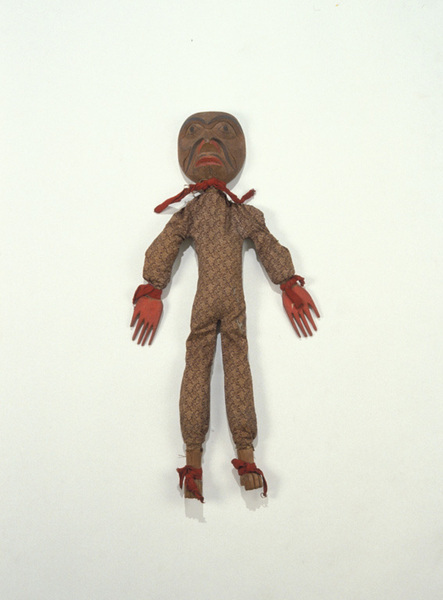
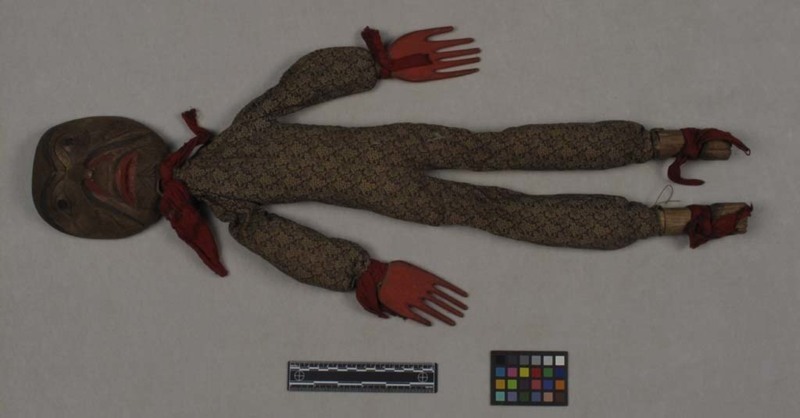

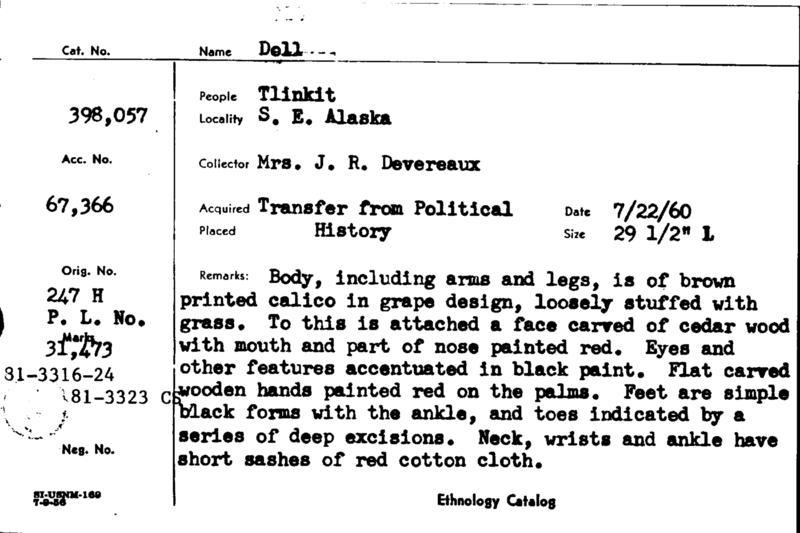
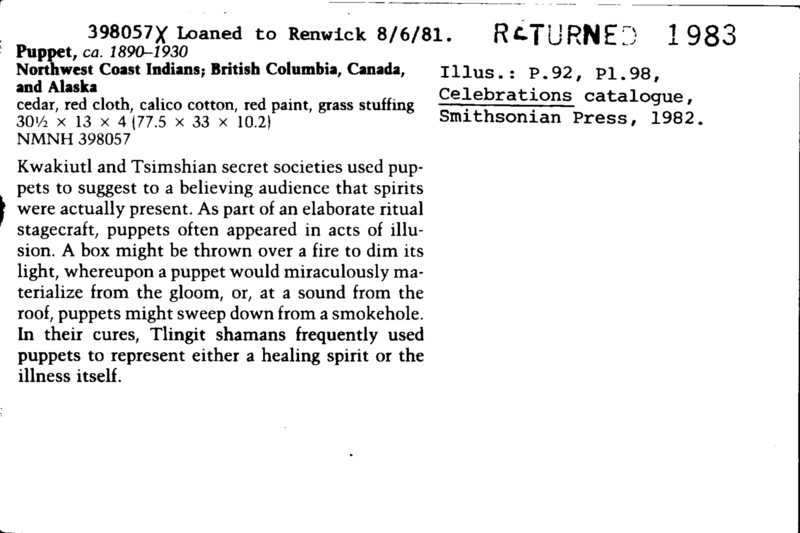
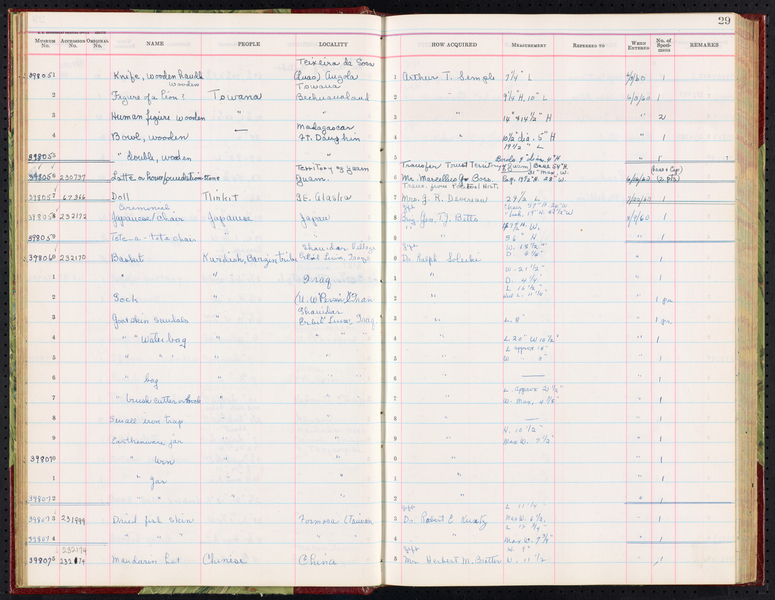
Notes
From card: "Body, including arms and legs, is of brown printed calico in grape design, loosely stuffed with grass. To this is attached a face carved of cedar wood with mouth and part of nose painted red. Eyes and other features accentuated in black paint. Flat carved wooden hands painted red on the palms. Feet are simple black forms with the ankle, and toes indicated by a series of deep excisions. Neck, wrists and ankle have short sashes of red cotton cloth. Illus.: p. 92, Pl. 98, Celebrations catalogue, Smithsonian Press, 1982. [caption from this catalogue is attached to card:] Puppet, ca. 1890-1930. Northwest Coast Indians; British Columbia, Canada, and Alaska. cedar, red cloth, calico cotton, red paint, grass stuffing. 30 1/2 x 13 x 44 (77.5 x 33 x 10.2). Kwakiutl and Tsimshian secret societies used puppets to suggest to a believing audience that spirits were actually present. As part of an elaborate ritual stagecraft, puppets often appeared in acts of illusion. A box might be thrown over a fire to dim its light, whereupon a puppet would miraculously materialize from the gloom, or, at a sound from the roof, puppets might sweep down from a smokehole. In their cures, Tlingit shamans frequently used puppets to represent either a healing spirit or the illness itself."
Item History
- Made in Alaska, USA
- Collected in Alaska, USA
- Received from Mary E. Sinnott on October 28, 1921
What
- Name
- Doll
- Identification Number
- E398057-0
- Type of Item
- puppet
Who
- Culture
- Tlingit
- Received from
- Mary E. Sinnott
Where
- Holding Institution
- National Museum of Natural History
- Made in
- Alaska, USA
- Collected in
- Alaska, USA
When
- Acquisition Date
- on October 28, 1921
Other
- Accession Number
- 067366